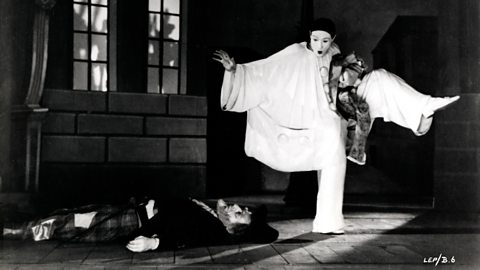Make-up
Bright stage lighting can wash out facial features and make performers appear pale, so make-up is used to enhance features and make sure that the audience can see the actorsâ facial expressions.
Make-up can also be used to age an actor who is playing an older character or to create fantasy characters, such as the fairies in Shakespeareâs A Midsummer Nightâs Dream.
Traditional western stage make-up was called greasepaint. This was a heavy, oily foundation and in the past actors would use it to exaggerate facial features and character. Nowadays, stage make-up tends to be more subtle and naturalistic, but there are exceptions. The type of make-up used depends upon the style of performance.
Make-up can also be used symbolically. In Joan Littlewoodâs Theatre Workshopâs production, Oh What a Lovely War, the actors playing soldiers in the First World War are dressed as pierrot clowns, with painted white faces and black eyes and lips. This is to symbolise that they are innocent, tragic fools in a war game over which they have no control.

Other forms of theatre use make-up as an essential part of the performance such as the Japanese Kabuki theatre which employs elaborate stage make-up to create character.
